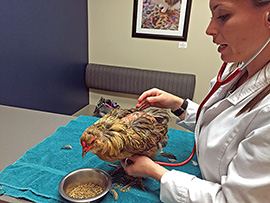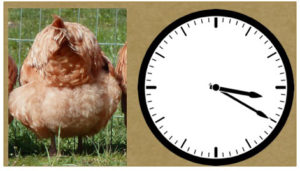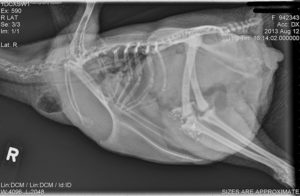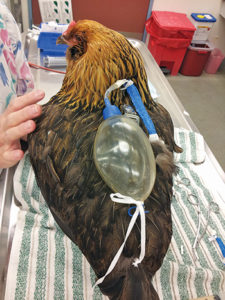Tips to Help Busy Practitioners with Chicken Cases
Have you been seeing a lot of backyard chickens at your practice recently?

If yes, you are certainly not alone. More and more clients are reaching out to veterinarians to ensure health and treat emergent issues in their hens, and the issues they are presenting with are not the issues we were trained to recognize in veterinary school.
If your poultry medicine training was much like mine, it focused on classic chicken infectious and nutritional diseases that are far more likely to occur in large production flocks. Backyard chickens, on the other hand, are much more likely to present with traumatic lesions secondary to predation and reproductive associated diseases (salpingitis, oviductal impaction, and oviductal and ovarian neoplasms).
Here are some of my favorite tips to help busy practitioners with chicken cases.
Bookmark farad.org

The Food Animal Residue Avoidance Databank (FARAD) is a crucial resource for every veterinarian. Every time you see a chicken, ensure that you ask whether the clients eat or plan to eat the eggs or meat. If clients are unwilling to turn their chicken into a pet and not eat their eggs or meat, you must follow FARAD guidelines for approved drugs and egg/meat withdrawal times. Easily search the FARAD website for approved drugs using the VetGRAM module, and you can even ask for advice if an unapproved drug is to be given. Most importantly make sure that you know which drugs should never be given to food animals, including chickens!
Use the ‘Chicken Restraint Device’
This sounds awful fancy, but is in fact just a bowl of some seed and colorful parrot pellets. Bonus if you have wiggly worms! Most chickens will stand still on an examination table with a bowl of something delicious to eat and allow you to perform the vast majority of an examination including auscultation, body condition score assessment, coelomic palpation, and more. You will likely need to have a more definitive restraint method for cloacal palpation and evaluation of the oral cavity, but you will be surprised how much you can do by simply providing a bowl of seed.
Cloacal Palpation

If your chicken practice is anything like mine, you are seeing a lot of hens with reproductive disease. Maybe they present with a distended coelom of fluid, active straining, or have stopped laying eggs, but many will present just fluffed and depressed and it will be up to you to find evidence of reproductive disease.
External palpation of the coelom is just not that rewarding in the chicken as their coelom is rather large and often has a “doughy” palpation. Performing coelomic palpation with your nondominant hand while simultaneously performing cloacal palpation with a lubricated gloved finger on your dominant hand will facilitate diagnosis of reproductive disease.
Thinking of the coelom as a clock face when the hen is facing away from you, the empty oviduct will be found in the 8 to 11 o’clock region, the full (egg, infection, cancer) oviduct will be lower in the coelom, in the 6 to 9 o’clock region, and a coelom full of fluid will have fluid collecting ventrally (in the 3 to 6 o’clock region). I have diagnosed a variety of reproductive diseases this way, and I hope you will be able to as well!

Regardless of what type of chicken case you are seeing, the Zoological Medicine service faculty are happy to chat about cases, give advice, and discuss what diagnostic and therapeutic options we have available here at the Veterinary Teaching Hospital.
Feel free to call to speak to us any time: 217-265-6437.
Useful References
• farad.org
• farad.org/vetgram/search.asp
• cafarad.ucdavis.edu/FARMWeb/
• farad.org/prohibited-and-restricted-drugs.html



